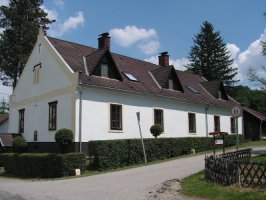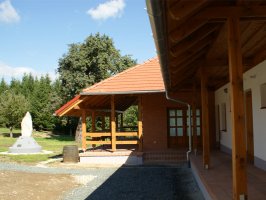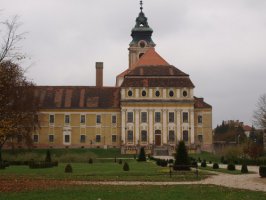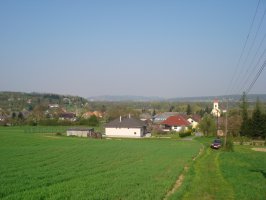- Pályázatírás
Pályázatírás
- Almalak
Almalak
- Mintagazdaság
Mintagazdaság
- Géppark
Géppark
priority activities
Az állandó kiállítások létrehozatalával – melyet évente legalább 500 látogató keres fel - hozzájárulunk a kulturális örökség megőrzéséhez ugyanakkor a közös térség ismertségének növeléséhez. Egyúttal ösztönözzük a kutatási tevékenységet az együttműködési területen. A publikációk számának növekedésével emelkedik az olvasók száma is. A műhelymunkák révén hozzájárulunk a foglalkoztatottság növeléséhez, hiszen a Rábavidéki és Goričkoi emberek egy újabb szakma fortélyait sajátíthatják el. A projekt ösztönzi az új technológiák alkalmazását a projekt kivitelezése is e szellemben valósul meg. Kialakításra kerülnek a kulturális rendezvények minőségi színterei Felsőszölnökön és Orfaluban. A rendezvények, találkozók és műhelymunkák hozzájárulnak a határ menti terület lakosságának kultúrájának és nyelvi identitásának megerősítéséhez. A Szomszéd a szomszédhoz tematikus út kijelölésével, az évente megrendezésre kerülő túra, valamint Rábavidék és Muravidék közös turisztikai kalauza által nő az együttműködési terület ismertsége.
Palaces
Felsőszölnök
Felsőszölnök, the westernmost settlement of Hungary lies at the bottom of the triple-boarder in a picturesque environment. Certificates first mentioned it in 1378 in Latin (Zelnuk Superior). It is worth to visit the Roman...
Orfalu
Written memories mentioned the settlement in 1538; the residents had been serfs of the Szentgotthárd Cistercian Abbey. Orfalu used to have 350 residents but by today it had become the smallest Slovenian settlement. Its...
Szentgotthárd
Felsőszölnök, the westernmost settlement of Hungary lies at the bottom of the triple-boarder in a picturesque environment. Certificates first mentioned it in 1378 in Latin (Zelnuk Superior). It is worth to visit the Roman...
Alsószölnök
The following stage of the northern valley of Raba-countryside is Alsószölnök which has been home of Slovenians, Germans and Hungarians for many centuries. Certificates first mentioned it together with Felsőszölnök, in 1378...
Slovenian Rába-country
The Slovenian Rába-country is situated in the west region of Hungary at the joining of Austrian-Hungarian-Slovenian boarder. Slovenians had already settled before Hungarians arrived. They arrived together with the Avars in the second half of the 6th century. Cistercian monastery was founded by King Béla III in 1183. Monks needed help to cultivate their land. This labour was the Slovenians who lived here or located here from present-day Prekmurje and Slovenian Styria. They formed the present-day settlements from the farms of the monastery in Szentgotthárd. Territory of Slovenian Rába-country is 94 km2, its cultural and economic centre is Szentgotthárd. In the Slovenian villages (Felsőszölnök, Alsószölnök, Szakonyfalu, Orfalu, Kétvölgy, Apátistvánfalva) the elements of traditional Slovenian folk culture are still present because of the peripheral geographical situation and its closeness till the end of 1980s. We can mention for example the extruding of squash seeds and using it for cooking, bride “collecting presents” in the village before the bridal, the joy-fires and cracking on Holy Saturday furthermore the new year’s day salutation. For many centuries the life of people living close to the triple-boarder was complicated by the Iron curtain. Today the main fascination of the countryside is the untouched nature what remained because of the former closeness. The region of triple-boarder shows its many faces to the visitors. Rába-country, being part of the Őrség, is the country of wimpling brooks and clean water springs where fertile valleys, meadows with rich grass and wild woods are varying. Moorland meadows formed along the cold water brooks running across valley foots among the hills and shows such rare vegetation like the Iris sibirica, Dactylorhiza latifolia or the Achillea ptarmica. On the meadows of dry hill sides the most divert colours are mixed to form a medley flower-carpet. Summer fills the meadows with the smell of thyme and hay, carol, cricket music and we can meet the spectacular, predator owlflies; on the meadow sides we can often see Red-backed Shrike, Yellowhammer on the branches of wild rose and sloe bushes. The untouched nature and the clean air provide excellent conditions for relaxation. The sparse settlements and forests of the valley of Rába, the Lake Hársas, the Slovenian Rába-country all give great many surprises for the visitors. Forests and meadows are waiting for hiking-fans and the serpentines are excellent for cycling. Historical monuments once marched by armies evoke many sad and glorious moments from the past. Its multicultural character gives insight into the culture and gastronomy of different peoples. The region is made unforgettable by this variety and the hospitability of those who live here.




